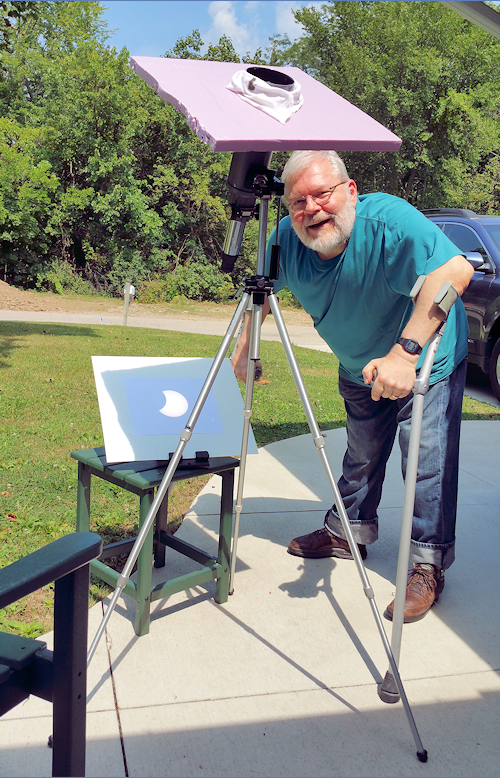 |
|
|
 |
|
|
|
Solar Eclipse — August 21, 2017 We invited a small group of friends and neighbors to view the eclipse with us. Though we had eclipse glasses, I thought it desirable to display the progress of the eclipse in such a way that everyone could view the Sun without craning their necks. The solution was to use a small telescope to project an image of the Sun onto a viewing screen. To that end, I devised the simple setup shown below.
The telescope is a cheap 80mm refractor that I had not used in years. It has a standard ¼-20 mounting hole that allowed for easy attachment to a lightweight camera tripod. To make the image of the Sun easier to see, I added an 18-inch square shade made of extruded foam to the front of the telescope. The viewing screen is a piece of white cardboard on a tilting stand meant to hold a computer tablet. The mount is not motorized, so I manually adjusted the azimuth and elevation every few minutes throughout the eclipse, a minor inconvenience. The image on the viewing screen was bright and easy for everyone in the group to see. The photos on the previous page were made with a Nikon D5100 DSLR camera by simply photographing the viewing screen. The inexpensive telescope produced images with a bit of chromatic aberration (false color fringes) around the Sun. I used Corel PaintShop Pro to remove the false color.
| |||||||
